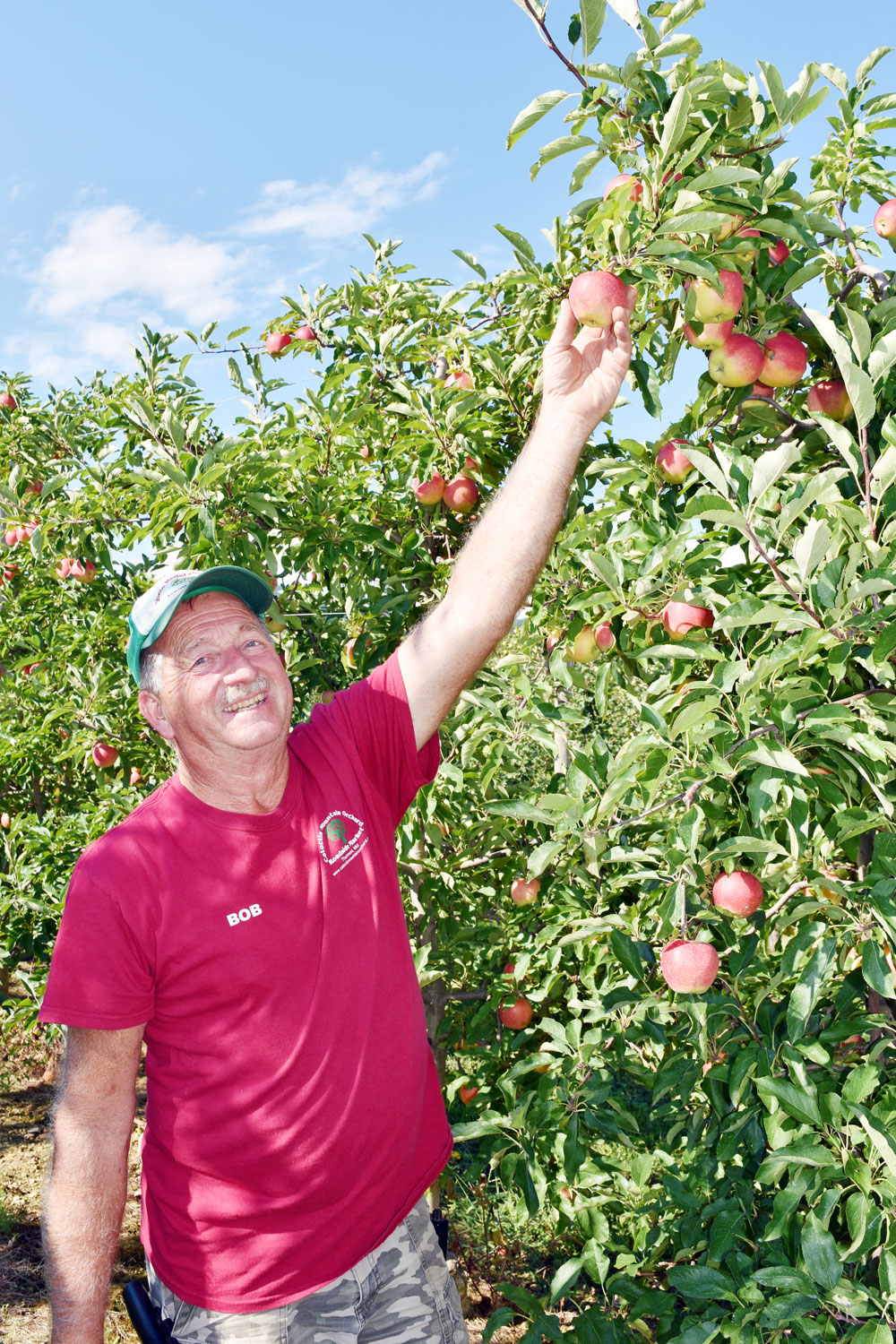Deb Abraham Spalding
At the Catoctin Mountain Orchard in Thurmont, apples aren’t just grown and sold, various varieties are studied, cultivated, and found! Congratulations to Robert (Bob) Black, of Catoctin Mountain Orchard, for earning the 2020 Apple Grower of the Year Award title.
The American Fruit Grower Apple Grower of the Year Award was created 31 years ago by the editor of American Fruit Grower® and Western Fruit Grower® magazines. It is presented annually and honors apple growers who have gone beyond the confines of the orchard and have, through their involvement and leadership, made a real impact on the apple industry due to their efforts in innovative production, marketing, horticultural, and management practices while being actively involved in associations and simultaneously taking a strong role in the apple industry.
Bob gives a lot of credit for this award to his father, the late Harry Black, who taught his children, Bob and Pat, the meaning of hard work at the orchard, leadership in the community, and cooperation and collaboration among apple growers with innovative growing practices.
Additionally, Bob gives credit to his family. He’s adamant, saying, “Yeah, I got the award, but basically, it belongs to the Catoctin Orchard family. I was just the one who traveled and took time to pursue other facets of the orchard business because my hardworking sister (Pat) kept things handled at home.” He explained, “This award went to me personally, but it really should go to our whole operation. It’s a team effort. All of my family and staff members do the work and make me look good…I’ve got to mention my family including my son, Christopher who represents the third generation along with Katlyn and Kylie the fourth generation who all help work this orchard.”
Bob feels that he wouldn’t be in the position to earn this award had it not been for a pivotal visit to the orchard from the University of Maryland’s Extension Specialist, Ben Rogers and University of Maryland Professor of Horticulture Dr. Arthur Thompson in the late 1970s where they suggested that Harry plant a relatively new variety of apple named Gala.
Many customers started shopping at the market for more Gala apples. Growing all those Gala apples is what led to an important discovery in 1995. To ensure top flavor all workers were advised to pick only the ripe apples leaving all green left on the trees. Three weeks after picking all the gala apples there was one tree that stood out. Bob was driving down the orchard road when he noticed one limb that had 60% red over yellow apples. “I thought we had picked everything down there, what the heck is that?”. It appeared to be a limb sport off of a normal ‘Gala’ tree that was clearly different and much later. Not only was this variety more red in color but it achieved the ‘noisy’ solid crunch with a sweet, crisp flavor. We contacted a well-known Nurseryman, Wally Heuser, to confirm that the Blacks latest discovery was in fact a new variety. The patent name was “Harry Black Gala” named after his dad, but the “Trade Name” was Autumn Gala which have planted all over the country. Unfortunately, Harry died in 1998 before the patent was issued.
To date, Bob remains involved with growing and experimenting with apples. He is a member of several professional organizations dedicated to orchards and growing fruit. He grafts and tests new varieties and shares his information for others to benefit.
Several of his peers commented about Bob’s impact in a Growing Produce article by David Eddy. “Mark Boyer of Ridgetop Orchards in Fishertown, PA, is a former chairman of the U.S. Apple Association, and the son of Dan Boyer, the 2006 Apple Grower of the Year. He said, ‘Bob Black has been a staple in the Mid-Atlantic fruit-growing region for decades. He has served on almost every board position available both in fruits and vegetables to social and community. Always the first to help and the last to complain.’”
If you’ve made any rounds to agricultural, school, or community service banquets in our area, or the State of Maryland for that matter, you will have noticed that Catoctin Orchard is often represented in the door prize or fundraising giveaways with several boxes of apples or gift certificates. Bob’s always sharing the gift of the growers.

Robert (Bob) Black, recently named Apple Grower of the Year, is shown in the apple orchard at Catoctin Mountain Orchard in Thurmont.

Pictured in this circa 1992 photo by Bob Black are University of Maryland Extension Specialist, Ben Rogers (left), Professor of Horticulture at University of Maryland, Dr. Arthur Thompson (right), with Harry Black (center), looking at Magnus Pear blossoms to detect if any pollination from insects or bees has taken place.

Pictured are Katlyn Robertson, Sage (dog), and Bob Black.


